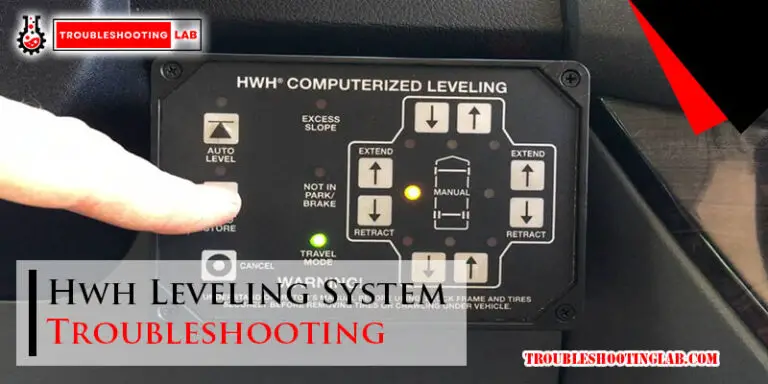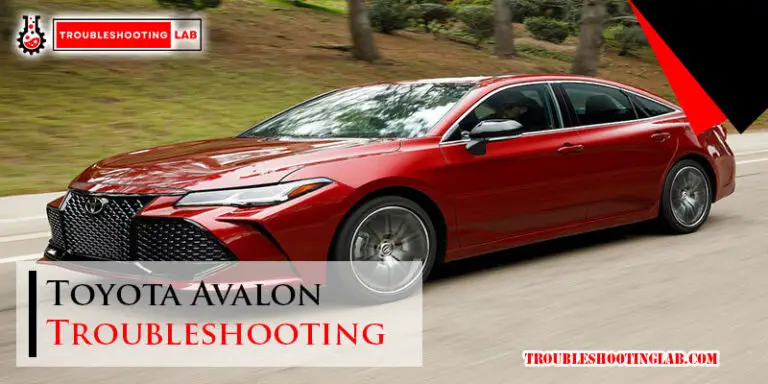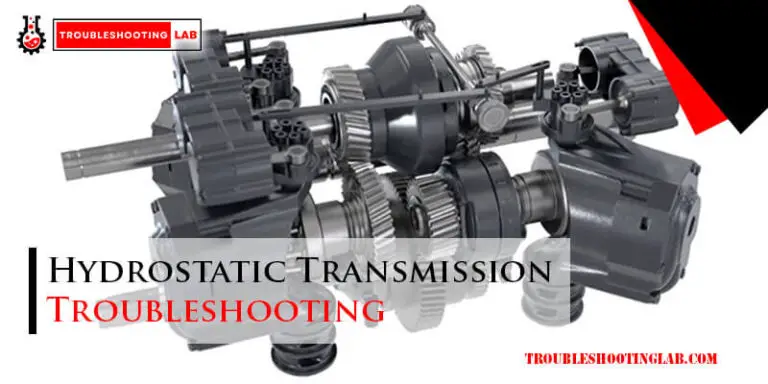Cv Axle Troubleshooting: Expert Tips to Diagnose and Fix Issues
CV axle problems can cause serious issues for your vehicle. Identifying these problems early can save you time and money.
In this blog post, we will explore CV axle troubleshooting. Understanding the symptoms of a failing CV axle is crucial. Common signs include clicking noises, vibrations, and grease leaks. Each symptom points to specific issues within the CV axle. Knowing these signs can help you diagnose and fix problems before they become severe.
This guide will walk you through the troubleshooting process. By the end, you will have a clear understanding of how to address and resolve CV axle issues. Stay tuned to learn more about keeping your vehicle in top shape.
Introduction To Cv Axles
Understanding the basics of CV axles can help you maintain your vehicle better. CV axles, or constant velocity axles, are crucial components in front-wheel and all-wheel drive cars. They transfer power from the transmission to the wheels, allowing your car to move smoothly.
Importance In Vehicle Function
CV axles play a vital role in your vehicle’s performance. They ensure power is delivered to the wheels at a constant speed. This process keeps your car moving efficiently. Without functioning CV axles, your vehicle might face serious issues.
These axles also help in smooth turning. They allow the wheels to turn at different speeds, which is necessary for navigating corners. Damaged or worn-out CV axles can lead to poor handling and even accidents.
Common Issues
CV axles can suffer from various problems over time. One common issue is a torn CV boot. The CV boot protects the axle and joints from dirt and moisture. If it gets damaged, grease leaks out, and contaminants enter, causing wear and tear.
Another issue is clicking noises when turning. This often indicates a problem with the CV joints. If left unchecked, it can lead to axle failure.
Vibration while driving is also a sign of CV axle trouble. It usually means the axle is bent or damaged. Immediate attention is required to prevent further damage.
Regular inspections and maintenance can prevent many CV axle issues. Early detection helps avoid costly repairs and ensures your vehicle runs smoothly.
Signs Of A Faulty Cv Axle
A CV axle is crucial for your vehicle’s performance. Identifying a faulty CV axle early can save you from costly repairs. Look out for these common signs to keep your vehicle in top shape.
Unusual Noises
One of the first signs of a faulty CV axle is unusual noises. Pay attention to:
- Clicking sounds during turns
- Clunking noises when shifting gears
- Loud thumps from underneath the car
These noises often mean the CV axle or joint is worn out. Act quickly to avoid further damage.
Vibration During Acceleration
Experiencing vibration during acceleration indicates a problem. Here are the key points to note:
- Vibrations intensify as speed increases
- Shaking felt in the steering wheel
- Uneven tire wear
Consistent vibrations suggest the CV axle is damaged or misaligned. Inspect it immediately for safety.
Visual Inspection Techniques
Visual inspection techniques play a critical role in diagnosing CV axle issues. These techniques help identify problems before they become severe. This section covers essential visual inspection methods for CV axles. Let’s dive into the details.
Checking For Grease Leaks
Grease leaks are a common sign of CV axle trouble. To check for leaks, look for grease around the wheel area. Pay close attention to the inner and outer CV joints. Leaking grease can appear on the wheel well, suspension, or nearby components. Leaks indicate a damaged or worn CV boot. Fixing this early can prevent further damage.
Assessing Boot Condition
The CV boot protects the CV joint from dirt and debris. Inspect the boot for any cracks or tears. A damaged boot cannot protect the joint. This can lead to joint failure. Gently squeeze the boot to check its flexibility. A stiff or brittle boot needs replacement. Look for any signs of wear or dry rot. Regular checks can extend the life of your CV axle.
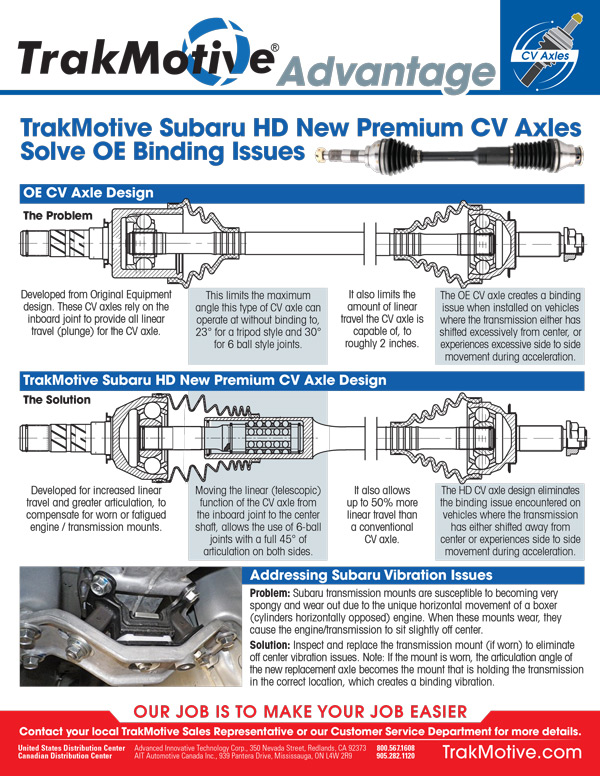
Credit: www.trakmotive.com
Test Driving For Diagnosis
One of the most effective ways to diagnose CV axle issues is through a test drive. This method allows you to directly observe and feel potential problems. During a test drive, you can identify symptoms that indicate a failing CV axle. Here are some key aspects to focus on during the test drive.
Listening For Clicking Sounds
Clicking sounds are a common indicator of CV axle problems. When you hear these sounds, especially during turns, it often points to a damaged CV joint.
To test for this, drive your car in a quiet area. Make slow, sharp turns and listen carefully. If you hear a clicking noise, it suggests that the CV joint is worn out.
Feeling For Steering Issues
Steering problems can also signal CV axle troubles. You might feel vibrations or hear strange noises while steering.
To check for this, drive straight and make turns at various speeds. Pay attention to any unusual vibrations or sounds coming from the steering wheel. If the steering feels off or you notice vibrations, the CV axle might be the culprit.
Summary Table: Symptoms and Indicators
| Symptom | Possible CV Axle Issue |
|---|---|
| Clicking sounds during turns | Worn-out CV joint |
| Vibrations while steering | Damaged CV axle |
Regular test driving can help catch CV axle issues early. This proactive approach can save you time and money on repairs.
Common Causes Of Cv Axle Failure
The CV axle is a crucial component in your vehicle’s drivetrain. It transfers power from the transmission to the wheels. Understanding the common causes of CV axle failure can help you maintain your vehicle better. Let’s dive into two primary reasons: wear and tear, and exposure to elements.
Wear And Tear
Regular use leads to natural wear and tear on the CV axle. Over time, the constant movement and pressure cause the joints to degrade. This wear can result in clicking sounds when turning. It may also lead to vibrations while driving. Ignoring these signs can cause further damage. Regular maintenance can help identify wear early.
Exposure To Elements
CV axles are exposed to various elements. Water, dirt, and road salt can damage the axle. These elements can cause rust and corrosion. A torn CV boot allows contaminants to enter. This leads to faster wear of the joints. Regularly inspecting the CV boots can prevent exposure-related damage.

Credit: www.justanswer.com
Repairing Cv Axle Issues
Repairing CV axle issues is vital for vehicle safety and performance. The CV axle transfers power from the transmission to the wheels. Damage to the CV axle can cause vibrations, noise, and steering problems. Address these issues promptly to avoid further damage.
Replacing Cv Boots
CV boots protect the CV joints from dirt and debris. Over time, the boots can crack or tear. A damaged CV boot can lead to joint failure. Inspect the boots regularly for signs of wear. If you find any damage, replace the boots immediately. This simple fix can save you from costly repairs.
Full Cv Axle Replacement
Sometimes, the entire CV axle needs replacement. If the CV joint is damaged or the axle is bent, it’s best to replace the whole unit. This ensures the vehicle runs smoothly. Replacing the axle is more complex than replacing boots. It often requires professional help. But, doing it right ensures your vehicle’s longevity and safety.
Preventative Maintenance Tips
Ensure your CV axle stays in good condition by checking for grease leaks regularly. Listen for unusual noises while driving, and address vibrations promptly to prevent further damage.
Preventative maintenance is crucial for the longevity of your CV axle. Simple steps can save you from costly repairs. Follow these tips to keep your vehicle running smoothly.Regular Inspections
Check your CV axle regularly. Look for any signs of wear. Inspect the rubber boots for cracks or tears. Damaged boots can let dirt in, causing damage. Listen for clicking sounds when turning. This can indicate a problem with the CV joints.Proper Lubrication
Ensure your CV axle is properly lubricated. Lubrication reduces friction and wear. Use the right type of grease for your vehicle. Check the manual for recommendations. Reapply grease if you notice any leaks. Proper lubrication extends the life of your CV axle. “`When To Seek Professional Help
Dealing with CV axle issues can be challenging. Sometimes, seeking professional help is necessary. Knowing when to hand over the task to an expert can save time and avoid further damage.
Complex Repairs
Some CV axle repairs need specialized tools. Without these, fixing the problem is difficult. Professionals have the right tools and skills. They can handle complex repairs with ease.
For instance, replacing the entire CV axle requires precision. Incorrect installation can lead to more problems. A professional ensures the job is done correctly. They follow specific steps to ensure safety and functionality.
Persistent Issues
Sometimes, CV axle issues persist despite your efforts. Strange noises, vibrations, or steering problems may continue. These signs indicate a deeper issue. Persistent problems need a professional diagnosis.
Experts can identify hidden problems. They have experience and knowledge about CV axles. A professional mechanic can spot issues that a DIY approach might miss. Getting professional help ensures a lasting solution.
Don’t ignore persistent issues. Addressing them early prevents further damage. A professional can provide peace of mind and ensure your vehicle runs smoothly.
Cost Considerations
When dealing with CV axle issues, cost considerations are crucial. The expenses can vary based on several factors. These factors include whether you choose to repair the axle yourself or hire a professional. Additionally, the long-term health of your vehicle can also affect your costs.
Diy Vs. Professional Repairs
Choosing between DIY repairs and hiring a professional can significantly impact your expenses. Here is a simple breakdown:
| DIY Repairs | Professional Repairs |
|---|---|
|
|
While DIY repairs can save money initially, they demand time and tools. Mistakes can lead to higher costs later. On the other hand, professional repairs ensure expertise and save time, but they come with labor charges.
Long-term Vehicle Health
The long-term health of your vehicle is another important factor. Proper repairs can prevent further issues and extend your car’s life. Here are some key points to consider:
- Regular maintenance can prevent costly repairs.
- Professional repairs often come with warranties.
- DIY repairs might lead to recurring problems if not done correctly.
Investing in professional repairs can provide peace of mind. It can ensure your vehicle runs smoothly and minimizes the risk of future problems.
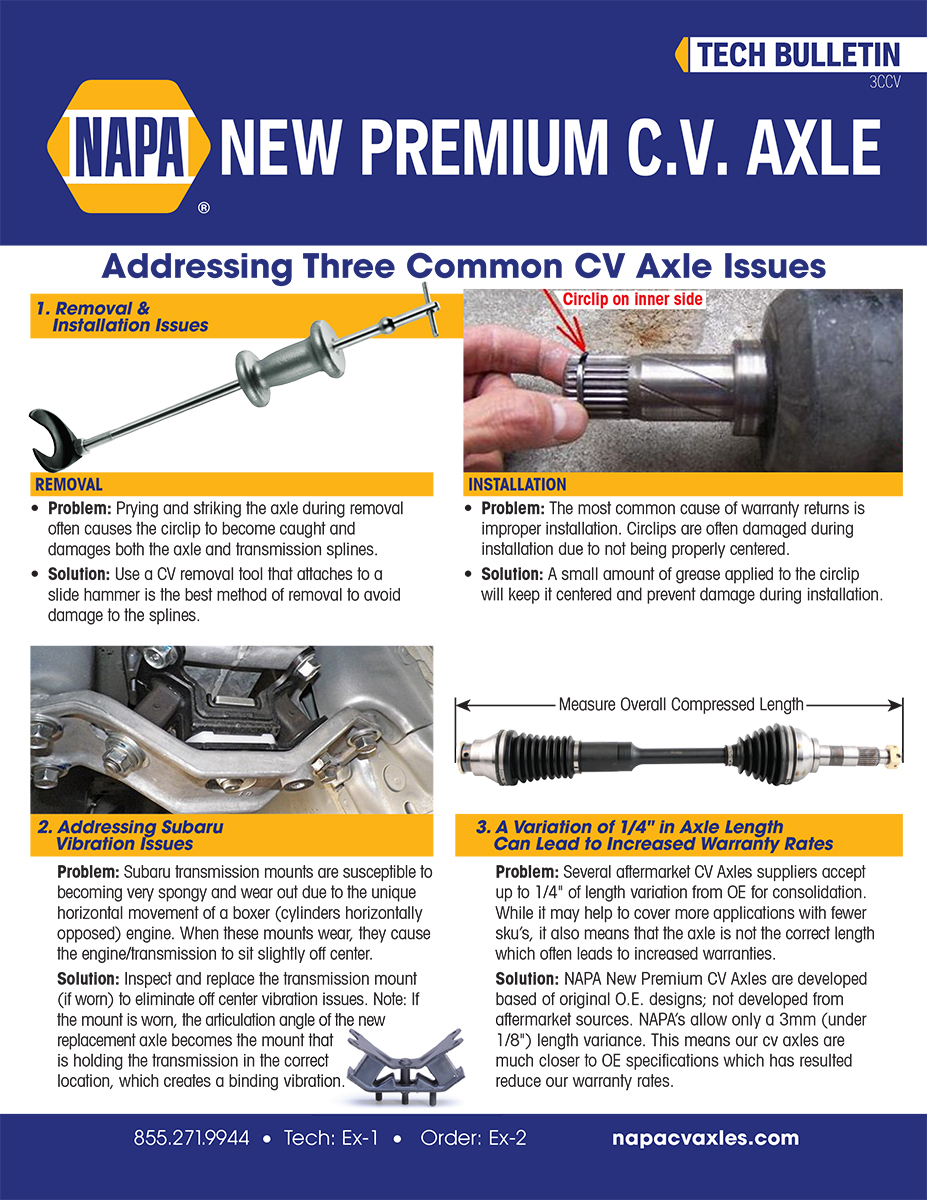
Credit: napacvaxles.com
Frequently Asked Questions
What Are The Common Symptoms Of A Bad Cv Axle?
A clicking noise when turning, vibration while driving, and grease on the tire.
How Long Does A Cv Axle Typically Last?
Most CV axles last between 70,000 and 130,000 miles.
Can I Drive With A Damaged Cv Axle?
Driving with a bad CV axle is dangerous. It can lead to a breakdown.
How Much Does It Cost To Replace A Cv Axle?
Replacing a CV axle usually costs between $200 and $400.
What Causes A Cv Axle To Fail?
Wear and tear, torn boots, and lack of lubrication often cause CV axle failure.
Conclusion
Troubleshooting your CV axle can save time and money. Follow these simple steps. Listen for clicking sounds and check for grease leaks. Regular inspection helps catch problems early. Replace damaged parts promptly to avoid more issues. Remember, maintaining your CV axle ensures a smoother ride.
Keep your vehicle in top condition with proper care. Stay safe on the road by addressing axle concerns quickly. Happy driving!


